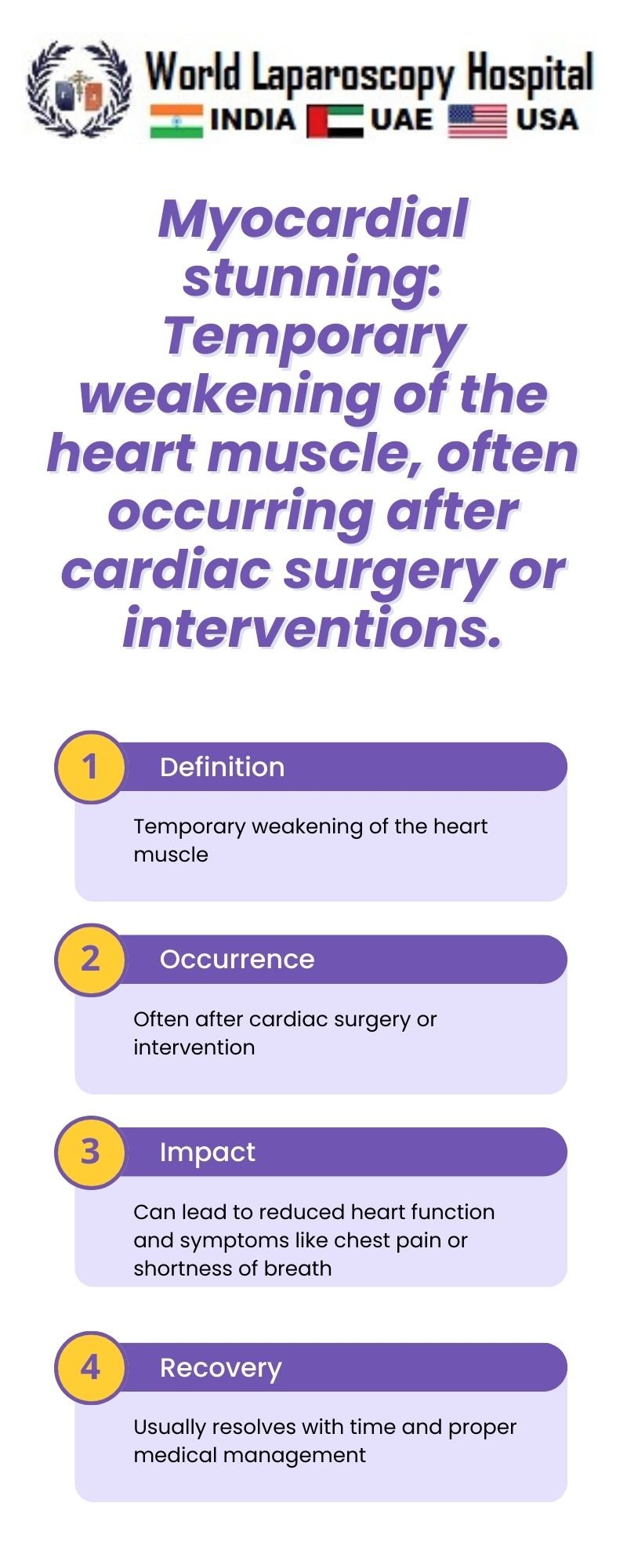Introduction
Myocardial stunning is a condition in which the heart muscle experiences a temporary decrease in contractility, despite adequate blood flow. This phenomenon is most commonly observed after procedures such as coronary artery bypass grafting (CABG), angioplasty, or after a heart attack. The exact mechanisms underlying myocardial stunning are not completely understood, but it is believed to be related to ischemia-reperfusion injury and alterations in myocardial metabolism.

Causes of Myocardial Stunning
The primary cause of myocardial stunning is ischemia-reperfusion injury, which occurs when blood flow to the heart muscle is temporarily reduced or interrupted during a procedure or after a heart attack. This interruption in blood flow deprives the heart muscle of oxygen and nutrients, leading to a decrease in contractility. Upon reperfusion, the sudden influx of oxygen-rich blood can further damage the already compromised myocardium, exacerbating the stunning effect.
Mechanisms of Myocardial Stunning
Several mechanisms have been proposed to explain the phenomenon of myocardial stunning. These include:
Calcium overload:
Ischemia-reperfusion injury can disrupt calcium homeostasis in the myocardium, leading to an overload of calcium ions in the cells. This can impair the contractile function of the heart muscle.
Reactive oxygen species (ROS) production:
Ischemia-reperfusion injury can increase the production of ROS in the myocardium, leading to oxidative stress. ROS can damage cell membranes, proteins, and DNA, further impairing myocardial function.
Inflammatory response:
Ischemia-reperfusion injury can trigger an inflammatory response in the myocardium, leading to the release of cytokines and other inflammatory mediators. This can contribute to further damage to the heart muscle and impair contractility.
Altered myocardial metabolism:
Ischemia-reperfusion injury can alter myocardial metabolism, leading to a shift from aerobic to anaerobic metabolism. This can impair the production of ATP, which is essential for normal myocardial function.
Clinical Implications of Myocardial Stunning
Myocardial stunning can have several clinical implications, including:
Decreased cardiac output:
The temporary decrease in contractility associated with myocardial stunning can lead to a decrease in cardiac output, which can manifest as symptoms such as fatigue, shortness of breath, and chest pain.
Arrhythmias:
Myocardial stunning can predispose the heart to arrhythmias, such as ventricular tachycardia or fibrillation, which can be life-threatening if not managed promptly.
Increased risk of heart failure:
Prolonged or severe myocardial stunning can increase the risk of developing heart failure, as the heart muscle may not be able to recover fully from the temporary dysfunction.
Impaired recovery after surgery:
Myocardial stunning can prolong the recovery period after cardiac surgery or interventions, as the heart may take longer to regain its normal function.
Management of Myocardial Stunning
The management of myocardial stunning focuses on restoring normal myocardial function and preventing further damage. This may include:
Oxygen therapy:
Supplemental oxygen may be administered to improve oxygen delivery to the myocardium and aid in recovery.
Fluid management:
Intravenous fluids may be administered to maintain adequate blood volume and cardiac output.
Inotropic agents:
Inotropic agents, such as dobutamine or milrinone, may be used to improve myocardial contractility and cardiac output.
Antiarrhythmic medications:
Antiarrhythmic medications may be used to manage arrhythmias associated with myocardial stunning.
Monitoring:
Close monitoring of cardiac function, electrolyte levels, and fluid status is essential to assess the response to treatment and prevent complications.
Conclusion
Myocardial stunning is a transient condition characterized by the temporary weakening of the heart muscle, often occurring after cardiac surgery or interventions. While the exact mechanisms underlying myocardial stunning are not completely understood, ischemia-reperfusion injury is believed to play a central role. Management strategies focus on restoring normal myocardial function and preventing further damage. Further research is needed to better understand the pathophysiology of myocardial stunning and develop more effective treatment strategies.